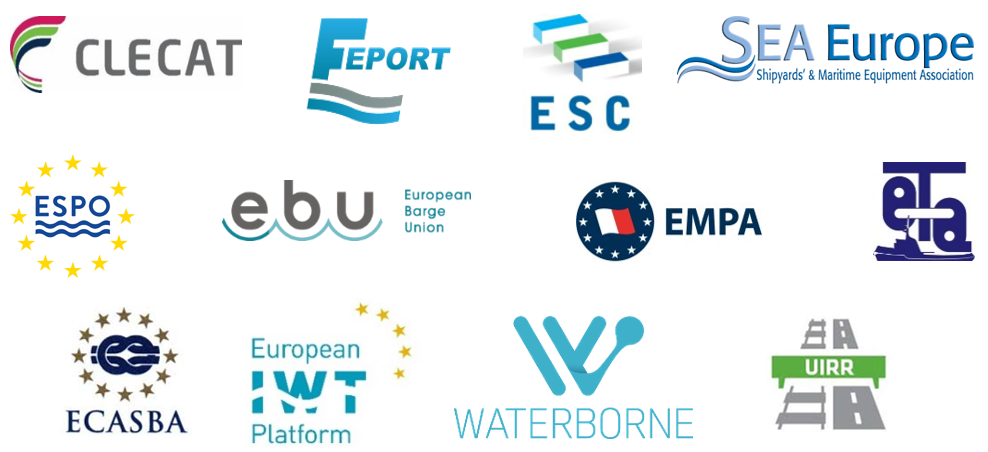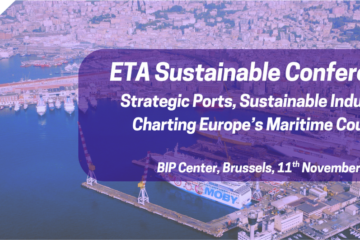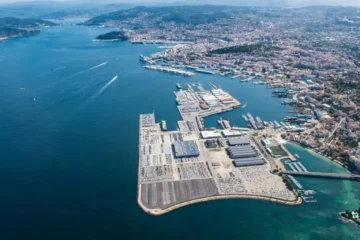
Brussels, December 8th, 2021
The undersigned associations representing different segments of the transport and logistics sector welcome the European Commission’s Fit for 55 proposals as a key step to reach the EU’s enhanced climate goals for 2030. The associations consider that the proposals are a necessary building block to turn the climate targets of the EU Green Deal into concrete policy actions and to bring about the greening of waterborne transport.
The associations reiterate their call for a meaningful dialogue with the EU institutions in view of adopting an ambitious and smart set of rules that will reinforce the leading role of the EU in terms of decarbonization whilst preserving Europe’s competitiveness.
The “Fit for 55” proposals constitute an interesting basis of work. They do however also require more finetuning and more importantly a more holistic and balanced approach as well as consistency with other EU policies, in particular the Sustainable and Smart Mobility Strategy.
Through this contribution, the associations seek to draw attention to some elements of the proposals that lack clarity or can be a source of confusion or contradiction.
- Onshore Power Supply (OPS): Total or partial tax exemptions
The FuelEU Maritime Regulation imposes requirements on ships to connect to onshore power supply (OPS) by 2030 and the AFI Regulation contains targets for infrastructure deployment in TEN-T core and comprehensive maritime ports. The undersigned associations welcome the aim of these proposals to regulate both the supply and demand for OPS.
In view of these targets, it is welcomed that the Energy Taxation Directive revision proposal (see article 15.5) allows for total or partial tax exemptions for electricity provided to vessels at berth. This could encourage vessel operators to increase the uptake of OPS already before it becomes mandatory by 2030.
A mandatory total exemption for electricity across all Member States, however, would produce better results. The lower the price of connecting, the higher the likelihood that vessel operators will opt for this clean solution. Applying a more harmonized tax rate across the EU is also crucial in view of ensuring a Level Playing Field between EU ports.
Furthermore, if the EU really wishes to increase the deployment of OPS infrastructure, the majority of investments should be public. It is for private companies in the current context difficult to make investment decisions, as, in view of the uncertainty that still exists regarding the pathways to decarbonization for the waterborne transport sector, return on investment remains very uncertain.
The associations also believe that there is a need to continue guaranteeing technology neutrality as this is a key enabler of innovation. The list of zero-emission technologies besides OPS allowed by the FuelEU Maritime Regulation should therefore be reviewed and made future proof.
Finally, consistency between the various Fit For 55 proposals and alignment of these proposals with other EU policies is a crucial prerequisite for a successful implementation of OPS. As already mentioned, a tax exemption will most likely stimulate demand and strengthen the business case thereby helping port stakeholders to meet the deployment targets of the Alternative Fuel Infrastructure Regulation proposal.
The need for consistency between Alternative Fuels Infrastructure Regulation (AFIR) and FuelEU Maritime is even more important. The associations believe that the OPS infrastructure deployment targets of AFIR can only be realistically met if the user requirements of FuelEU Maritime are not watered down and vice versa.
- Carbon leakage: Distortion of competition should also be addressed in the wider maritime and logistics sector, not only in those sectors covered by the Carbon Border Adjustment Mechanism (CBAM)
The EU Commission seeks to phase out allowances for various sectors covered by the EU ETS that are more than others subject to international competition and hence carbon leakage and proposes to apply a carbon levy to imports in those sectors instead.[1]
The rationale behind this approach is welcomed as it incentivizes sectors to reduce their emissions by eliminating free allowances while it protects them from carbon leakage by introducing a levy on imports based on their carbon content.
The associations call on the Commission to take a similar approach when it comes to ports and ships, i.e., to push sectors to reduce emissions while addressing the risk of carbon leakage.
With the EU ETS Directive proposal, the maritime sector will need to progressively surrender allowances for half of the emissions on extra-EU voyages. At the same time, FuelEU Maritime will impose GHG intensity limits to half of the energy consumed on extra-EU voyages.
This application of FuelEU and EU ETS to extra-EU traffic calling or departing from EU ports, could probably make routes towards and calls at non-EU ports in, for example, the UK, Russia or the Maghreb more attractive from a financial point of view. This way the competitiveness of the EU maritime sector would be harmed, without actually reaching emission reductions.
For shortsea shipping, this approach will mean an additional competitive constraint compared to less sustainable transport options and would thus be in contradiction with the European Commission’s mobility policies.
In the context of CBAM, it will be equally important to carefully minimize any impacts of the current proposal on the competitiveness of European industries exposed to global competition.
Therefore, as EU ETS and FuelEU Maritime are being implemented, the EU should at the same time introduce measures to prevent carbon leakage and a loss of competitiveness in the maritime sector.
The associations appreciate that the EU is calling on other regions to propose initiatives similar to the EU, but this may not be sufficient to avoid carbon leakage in the short to medium term.
- Revenues from “Fit for 55” proposals: Revenues raised through the various “Fit for 55” proposals should be used to support emissions’ reductions by industry
It is to be supported that the EU Emissions Trading Scheme (ETS) Directive proposal mentions that part of the revenues raised by the auctioning of allowances should flow to the Innovation Fund and cover investments aimed at decarbonizing the maritime transport sector, such as sustainable alternative fuels or zero-emissions propulsion technologies.[2] It is also a positive signal that parts of the revenues collected via penalties under the FuelEU Maritime Regulation will flow to the Innovation Fund and could support “common projects aimed at the rapid deployment of renewable and low carbon fuels in the maritime sector”[3].
The undersigned associations, however, would like an even clearer commitment of EU policy makers through a guarantee that the funds raised via FuelEU Maritime and the EU ETS will be used to green the maritime transport sector, which includes investments into port infrastructure and, if necessary, superstructure as well.
The above principle should apply to all parts of the transport sector. Terminal operators and inland shipping, for example, should be able to receive the revenues coming from the implementation of the Energy Taxation Directive to be used for innovation projects aimed at achieving emission reductions or for retrofits or fleet replacement programs in order to move from diesel-based equipment to greener alternatives.
- LNG and other transitional fuels: Recognize the transitional role of LNG in all the “Fit for 55” proposals and other EU climate-related legislation
The Alternative Fuels Infrastructure (AFI) Regulation compels Member States to ensure that by 1 January 2025, sufficient LNG refueling points are in place to allow seagoing ships to circulate throughout the TEN-T core network.
In other words, the AFI Regulation still assigns an important role to LNG in the short- to medium-term. This is the correct approach since, as shown by recent orders by shipping companies of LNG vessels, LNG will likely remain a relevant alternative for the shipping market in the near future. Moreover, many port stakeholders already made significant investments in view of the requirements spelled out in the AFI Directive of 2014.
At the same time however, it should be prevented that port stakeholders need to provide LNG refueling points where there is no return on investment. The AFI Regulation should therefore follow an approach where the provision of LNG infrastructure is still allowed for, but no requirements are imposed in the absence of demand from the shipping side.
At the same time, the uptake of LNG should be stimulated through tax measures, by retaining it as a transitional fuel under the Energy Taxation Directive.
The undersigned associations support an approach towards decarbonization that, at least in the short- and medium-term, also includes the use of low carbon fuels.
- Impact assessments of the Fit for 55 proposals: Provide proper analyses on the impact of proposals
By changing tax rates through the Energy Taxation Directive (ETD) revision and by including new segments of the transport sector (maritime and road) into EU ETS, the prices of passenger and freight transport for each transport mode will inevitably change. The impact of this should not be a modal shift towards less sustainable transport options.
The associations note that a proper analysis on the impact of the ETS on the European maritime logistics supply chain is missing in the impact assessment and also call for an overarching assessment on the cumulative impact of the Fit for 55-package on greenhouse gas emissions and the competitiveness of the European waterborne, port and logistics sector.
The signatory organizations:
- FEPORT
Federation of European Private Port Companies and Terminals
- CLECAT
European Association for Forwarding, Transport, Logistics and Customs Services
- ESC
European Shippers’ Council
- SeaEurope
Ships and Maritime Equipment Association of Europe
- ESPO
European Sea Port Organization
- EBU
European Barge Union
- EMPA
European Maritime Pilots’ Association
- ETA
European Tugowners Association
- ECASBA
European Community Association of Ship Brokers and Agents
- IWT
European Inland Waterway Transport Platform
- Waterborne
Waterborne Technology Platform
- UIRR
International Union for Road-Rail Combined Transport



0 Comments